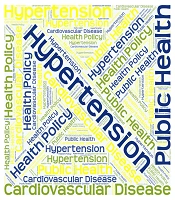Hypertension (HTN) is a primary global health concern, affecting over 1 billion individuals worldwide, and is the leading risk factor for cardiovascular disease (CVD) as the primary cause of death globally. High systolic blood pressure (SBP) alone is estimated to be responsible for more than 50% of all CVD-related fatalities and 62% of deaths due to chronic kidney disease (1). The rising prevalence of HTN contributes to increasing healthcare costs, lost productivity, and long-term disability, significantly impacting the quality of life, particularly in low- and middle-income countries (2, 3).
There is a high prevalence of HTN in Iran, with a higher rate in women (21.9%) than in men (15.2%) (4). Despite this significant burden, gaps persist in the diagnosis and management of HTN. In adults aged 30 - 79 years with HTN, only 59% are diagnosed, 48% receive treatment, and only 24% are adequately controlled (1). Several modifiable risk factors contribute to the high rates of HTN, including unhealthy dietary patterns, physical inactivity, obesity, alcohol consumption, and smoking (5-7). Addressing these modifiable risk factors through coordinated public health interventions, improved healthcare access, and strengthened healthcare systems are crucial strategies to combat the HTN epidemic in Iran and mitigate its cardiovascular and renal consequences.
The Iranian healthcare system has implemented several strategies to manage HTN effectively (8). The Ministry of Health and Medical Education regularly updates national guidelines, such as the American College of Cardiology/American Heart Association (ACC/AHA) and JNC7 (Seventh Report of the Joint National Committee on Prevention, Detection, Evaluation, and Treatment of High Blood Pressure), to ensure they meet international standards (9, 10). Primary healthcare centers widely offer free blood pressure screenings and follow-up care. Public awareness initiatives educate citizens on the significance of regular blood pressure checks and healthy lifestyle choices. Despite these efforts, HTN control remains inadequate, highlighting the need for enhanced patient follow-up and integrated healthcare services, especially in rural areas (11).
A study of 10047 Kurdish adults from the Ravansar Non-communicable Disease (RaNCD) cohort aimed to estimate HTN prevalence, awareness, treatment, control, and their determinants. Hypertension prevalence was 15.7%, with 80.7% awareness, 73.2% treatment, and 53.3% control rates. Factors influencing awareness included female sex, older age, marital status, literacy, rural living, family history, and comorbidities like diabetes and dyslipidemia. Marital status, rural living, ex-smoker status, low physical activity, diabetes, and dyslipidemia significantly affected treatment, with female gender significantly associated with better control of HTN (12).
A study on the Kurdish population evaluated the Healthy Eating Index (HEI) 2015 and dietary patterns concerning incident HTN. The highest HEI-2015 quartile participants had a 39% lower HTN risk than the lowest, with HRs of 0.61. Similarly, individuals in the highest tertile of the plant-based dietary pattern had a lower risk of HTN, with HRs of 0.69 (crude) and 0.70 (adjusted) (7).
A study investigating the Triglyceride-Glucose Body Mass Index (TyG-BMI) and HTN risk in Iranian adults highlighted obesity's significant impact on HTN. There is a synergy between obesity and the TyG-BMI, and HTN risks are increased by 2.28 and 3.10 times, respectively, emphasizing obesity and the TyG-BMI's effects on blood pressure. The TyG-BMI proved a superior HTN predictor over BMI or TyG alone (13).
A nested case-control study explored dietary amino acids and HTN in the Ravansar Cohort, indicating lower amino acid intake in hypertensive versus control groups. While tryptophan had the lowest median intake and glutamic acid the highest in both groups, the relationship between branched-chain amino acid (BCAA) intake and HTN risk was nonlinear and varied across studies. Higher dietary amino acid intake, except for tryptophan and acidic amino acids, was associated with an increased HTN risk after adjusting for various factors (14).
A study investigated the relationship between baseline dietary intake of various fatty acids and the risk of first-incidence HTN. No significant relationship was found between the highest and lowest quartile intake of saturated fatty acids (SFA), monounsaturated fatty acids (MUFA), polyunsaturated fatty acids (PUFA), and trans fatty acids (TFA), and HTN risk. However, an inverse association was observed, with each 1gr per day increase in dietary MUFA intake over 6.4 years reducing HTN risk (HR: 0.97; 95% CI 0.94, 0.99; P = 0.044). Subgroup analyses showed that men had a lower risk of HTN with higher SFA intake, while no significant association was found for women or urban residents (15).
A multifaceted approach is essential to address HTN management gaps in Iran. Efforts should be made to integrate routine blood pressure checks into primary healthcare, with specific attention to at-risk groups (elders, women, diabetes, dyslipidemia). Follow-up should be improved to ensure treatment adherence and better HTN control. Achieve comprehensive weight management by prioritizing nutritional interventions, reducing salt intake, promoting fruit, vegetable, and plant-based diets, and reducing salt intake. Public health campaigns must raise awareness of the importance of lifestyle and blood pressure monitoring. Assuring equitable healthcare for rural communities requires strengthening rural health systems and training professionals on HTN management guidelines. Implementing these strategies in Iran can significantly reduce HTN prevalence and associated health burdens. Addressing modifiable risk factors and healthcare improvements is essential for better HTN management and public health outcomes.
